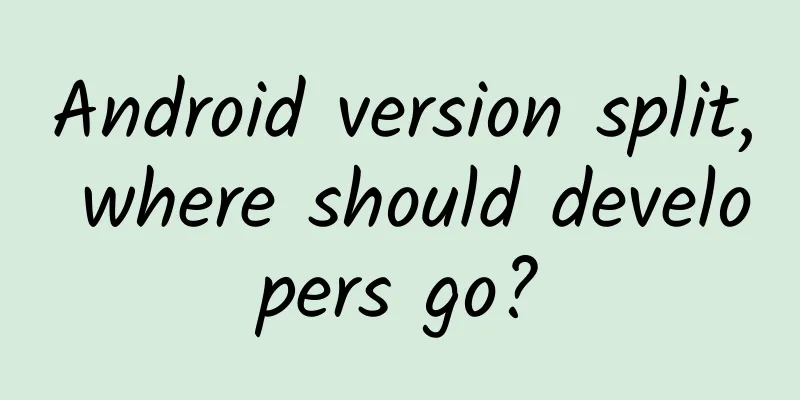Android version split, where should developers go?

|
Recently, Google released a distribution chart of Android versions. The situation is not optimistic as always. The latest version of Android 5.0 Lollipop has a market share of only 0.1%, while Android 4.4 Kitkat has just reached 39.1%. We can once again lament that the Android system version is split. However, Pocket Casts developer Russell Ivanovic wrote on his blog that from the developer's perspective, this split actually does not have much impact. He believes that when people see these numbers, it is easy to make wrong analysis. These analyses often ignore two facts. First, the number of Android devices on the market is 6 to 7 times the number of iOS devices. Therefore, if developers target the KitKat version of Android, which has a 39% market share, then the number of users may exceed that of iOS 8. Second, people often confuse the overall number with the number of users who actually purchase the app. Take the users of Pocket Casts as an example: From the perspective of the overall Android ecosystem, Android 5.0 only accounts for 1% of the market share, but among Pocket Cast users, 23% have already used the latest system. The reason is that those who buy apps and those who like the Android system have phones with brand new systems, while those who use old phones that are more than 5 years old and run Android 2.3 may never buy Pocket Casts. In addition, Android has another feature that is different from iOS. If iOS users want to use the features of iOS 8, they can only install iOS 8, but this is not the case with Android. Google has put many features in two libraries: Support and Google Play Services. Google Play Service is updated through the store and is not bound to a specific version of the system, while Support is something that developers put in the app and is updated daily by Google. When a new version of Android is released, many new APIs are in these two libraries, not in the core part of the system. This means that even with older system versions, users can use new features. In some ways, Android's backward compatibility is better than iOS. His advice to developers is Android major updates are not fixed on a certain day. Each phone has an update date. Therefore, it only makes sense to consider the penetration of new Android versions after manufacturers have updated their devices. |
>>: Meizu vs Xiaomi smart ecosystem: fierce debate in 2015
Recommend
Baidu Cloud OS is dead, LeEco may usher in the era of ecological mobile phones
Recently, the Baidu Cloud OS R&D team, which ...
Once the mortgage is paid off, the house is yours? Are you sure?
Addendum 1: It is recommended that you save this ...
Why is no one using your new feature?
Before deciding to launch a new feature, you need...
The latest policy on death allowance for only children in 2022: How much is the one-time subsidy?
In May 2022, the Ministry of Finance issued a noti...
Guide to starting a new Tik Tok account!
1. The current situation of Douyin live streaming...
How to increase the popularity of Douyin live broadcast room?
Short video content and live streaming have alway...
Is your product suitable for WeChat mini program? You need this product logic analysis!
On the evening of September 21, WeChat announced ...
iPad Pro keyboard disassembly: Fully conductive, repairable
The foreign website ifixit disassembled the iPad ...
IDC: China's smart home device market shipments are expected to exceed 260 million units in 2022, a year-on-year increase of 17.1%
Data from a report released by market research fi...
Qingbaijiang, another code of Chengdu to the world
In China's economic landscape, the Beijing-Ti...
Qualcomm: European 5G Action Plan Evaluation Report
Qualcomm and Ericsson collaborated with Analysys ...
The most comprehensive guide to promoting good products on Zhihu
There is a very good question on Zhihu: Why do or...
China Automobile Dealers Association: China accounts for 60% of the world's new energy vehicle market share in November 2021
From January to November 2021, global sales of ne...
China's Antarctic Qinling Station opens! Do you know about China's Antarctic Scientific Research Station?
China's Qinling Antarctic Station is located ...
If you were given 100,000 yuan, would you buy the Southeast DX3 pure electric car or the top-of-the-line fuel car?
According to official news from Southeast Auto, S...









